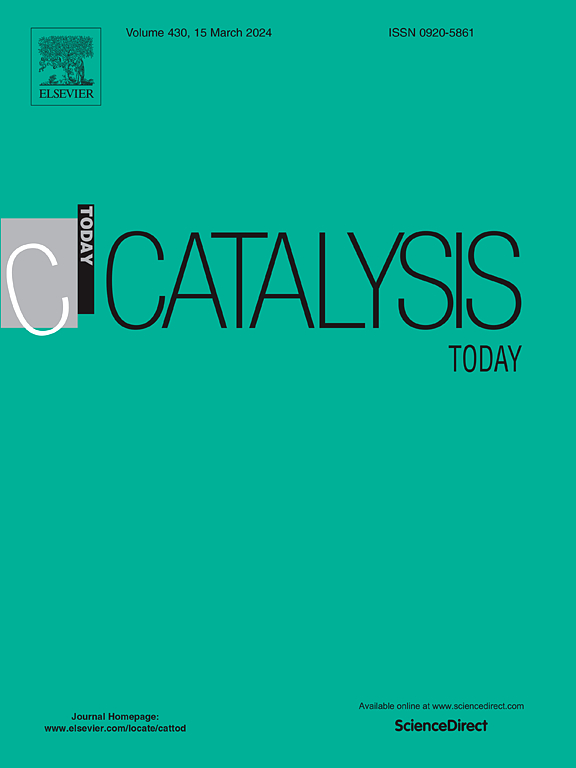Catalytic pyrolysis of MDF wastes over beta zeolite-supported platinum
IF 5.2
2区 化学
Q1 CHEMISTRY, APPLIED
引用次数: 0
Abstract
The increasing demand for clean energy and for the environmental protection has driven the search for new technologies that minimize the impacts of the excessive consumption of fossil fuel. Catalytic pyrolysis emerges as a promising alternative route for producing energy and chemicals from biomass, because of its flexibility, low cost and simplicity. However, the process still requires active catalysts that can be tailored for each application. With this goal in mind, catalysts based on platinum (1 %) supported on beta zeolite with different SAR (30, 60 and 90) were evaluated in the fast pyrolysis of pre-treated medium density fiber (MDF) residues in this work. Beta zeolite was prepared using silica extracted from coal ash came from a thermoelectric plant. Non-oxygenated compounds, such as BTEX (benzene, toluene, ethylbenzene and xylenes), other monoaromatics (21.2–26.5 %), naphthalene derivatives (5–29.2 %), polyaromatics (0–6.1 %) and linear hydrocarbon (0.4–11.9 %), as well as oxygenates (1.0–11.8 %), were produced over the catalysts in contrast with oxygenates (80.2 %) and linear hydrocarbons (6.6 %) formed without any catalyst. The catalysts changed the products distribution, the amount varying according to SAR and platinum. The platinum-containing catalysts with SAR 30 and 60 produced the highest amount of BTEX (41.1 and 42.0 %, respectively), the most valuable compounds among the products and formed negligible amounts of polyaromatics (0.3 %), the main coke precursor. They also produced low amounts of oxygenates (5.3: SAR 30 and 1.4 %: SAR 60). Among the BTEX compounds, the catalyst with SAR 30 produced more benzene, toluene and xylenes than that with SAR 60 which in turn formed more ethylbenzene. The catalyst with SAR 90 was the least selective to BTEX. This work showed that platinum supported on beta zeolites (SAR 30 and 60) are promising options to produce BTEX from MDF fast pyrolysis, with the advantage of tailoring the catalysts to obtain high yields of benzene, toluene, xylenes and ethylbenzene. Moreover, the process used two kinds of residues (MDF and coal ash), contributing to environmental protection.
求助全文
约1分钟内获得全文
求助全文
来源期刊

Catalysis Today
化学-工程:化工
CiteScore
11.50
自引率
3.80%
发文量
573
审稿时长
2.9 months
期刊介绍:
Catalysis Today focuses on the rapid publication of original invited papers devoted to currently important topics in catalysis and related subjects. The journal only publishes special issues (Proposing a Catalysis Today Special Issue), each of which is supervised by Guest Editors who recruit individual papers and oversee the peer review process. Catalysis Today offers researchers in the field of catalysis in-depth overviews of topical issues.
Both fundamental and applied aspects of catalysis are covered. Subjects such as catalysis of immobilized organometallic and biocatalytic systems are welcome. Subjects related to catalysis such as experimental techniques, adsorption, process technology, synthesis, in situ characterization, computational, theoretical modeling, imaging and others are included if there is a clear relationship to catalysis.
 求助内容:
求助内容: 应助结果提醒方式:
应助结果提醒方式:


